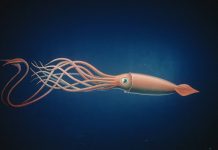Windows, that epitome of operating system excellence, just loves hammering away at mapped network drives whenever it sniffs even a whiff of network connectivity. Any network, mind you—right or wrong. Predictably, this stubborn attachment leads to performance hiccups and random hangs, all because Windows can’t resist reaching out to drives you couldn’t care less about right now.
Why does Windows insist on bothering network drives that you’re clearly not using? Fantastic question. Microsoft’s official stance: “No comment.” Good luck prying an explanation out of Redmond. In the meantime, here’s a radical thought—unmap those pesky drives before wandering away from your comfy home turf.
Crack open PowerShell as admin and spit out a CSV file listing your mapped drives:
# Get the details of all network drives and export them to a CSV file
Get-PSDrive -PSProvider FileSystem | Where-Object {$_.DisplayRoot -notlike $null} | Select-Object Name, DisplayRoot | Export-Csv -Path "C:\network_drives_backup.csv" -NoTypeInformation
# CSV example:
Name DisplayRoot
U \NAS06\ftpshome_igor
V \NAS06\media2
W \nas04\backups
X \nas04\software
Y \NAS05\media
Z \nas04\Download
With your handy drive manifest safely stashed, purge those pesky connections with:
# Disconnect all active network drives
Import-Csv -Path "C:\network_drives_backup.csv" | ForEach-Object {
$driveLetter = $_.Name + ":"
net use $driveLetter /delete
Write-Output "Disconnected drive $driveLetter"
}
Back in familiar territory? Restore those precious mappings painlessly:
# Reconnect all network drives from the backup CSV file
Import-Csv -Path "C:\network_drives_backup.csv" | ForEach-Object {
$driveLetter = $_.Name + ":"
$path = $_.DisplayRoot
net use $driveLetter $path /persistent:yes
Write-Output "Reconnected drive $driveLetter to $path"
}
And there you have it—a workable fix to a problem Windows would rather ignore. At least one of you can adapt to circumstances.

Experienced Unix/Linux System Administrator with 20-year background in Systems Analysis, Problem Resolution and Engineering Application Support in a large distributed Unix and Windows server environment. Strong problem determination skills. Good knowledge of networking, remote diagnostic techniques, firewalls and network security. Extensive experience with engineering application and database servers, high-availability systems, high-performance computing clusters, and process automation.





















